The Hebrew prophets: might you be able to name just one? Starting with Moses, there were at least 17 who asserted warnings then assurances of hope before Jesus showed up. Their persistence, heartfelt passion and vivid imagery has long fascinated me. Their unified story is a gold mine. Yet we live in a time now where fewer and fewer people have even minimal awareness of the ancient messages.
There’s nothing new under the sun and such bible-word cluelessness is not unlike the times when some of the characters like Jeremiah and Micah, Hosea and Isaiah spoke out-loud (each tying back uniquely to what had been written down already). But the listeners were not having it. So, Jeremiah was told to make his own body a visual in some stark ways. Jonah became a walking billboard, and Amos recorded vivid pictures prompted by God: “What do you see, Amos?” He was then to visualize it for others.
One of my first jobs out of college was to design visuals, charts and graphics for historical spiritual ideas. I didn’t know I was good at it, just enjoyed it. I also didn’t know that while there came a long hiatus for me from that kind of work (once babies arrived) that the whole culture was moving away from words and needing images. I just kept reading. And like a soup simmering on my stove, images would waft up like the scent of seasons.
So, fast forward several decades to where people get their news in sound bites promoted by image and grabbed by icons. And Bibles are sold with coloring pages. It is what it is. Visuals have the potential to beckon toward understanding (see last post), but many just stop at the signs, blinking blindly.


Several years ago I did a series of small sketches after reading through every page of my Bible. I picked one verse that jumped out to me from each in the collection of 39 Old Testament and 27 New Testament books. Then I worked quickly at recording a summary image for each of those 66. They were displayed for a month at my church. The series was called “Vox”.
I am highlighting these again now, the more vivid ones at least, on instagram and twitter, paying particular attention to the prophets. For their words still speak and are better than the evening news.
Here’s just one from the tiny book of Haggai, 2nd chapter, verse 5:
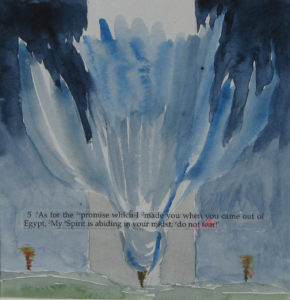
 “First I have the picture” Einstein reportedly said, “then I come up with the math”. Before any of us knew how to decode language, our little eyes trained on images. Even the cones on our retinae respond to color before form is understood. We begin from image impression, but then sometimes the more we “know” what’s in front of us, the less we can wholly grasp.
“First I have the picture” Einstein reportedly said, “then I come up with the math”. Before any of us knew how to decode language, our little eyes trained on images. Even the cones on our retinae respond to color before form is understood. We begin from image impression, but then sometimes the more we “know” what’s in front of us, the less we can wholly grasp.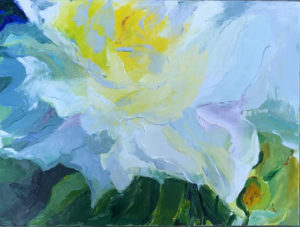 darks and lights from a photo of a magnolia blossom. What was important in translating this into paint was not “this is a magnolia’ but rather more than that, and I needed to take time to consider how. My oil color is carefully selected. But what excites me is the emergent shine, and the impasto lending toward a sense of exuberance. The cropping too was a choice, as if I am just teasing the viewer into only a glimpse. Glimpses for me are key, for if I try to tell the whole story, we’ll all get lost in words. There’s an energy in this translation into color that springs off the canvas. Usually I dive into work from an idea in my head, but to take the time to map it first, if even so simply, is important, and more than I knew. I’ve heard about the necessity of sketchbook planning, but since I’m not much of a draftsman and am also impatient, I’ve often skipped that part. “I see said the blind man”. So this mapping process was a win for me, and it’s informing further practice.
darks and lights from a photo of a magnolia blossom. What was important in translating this into paint was not “this is a magnolia’ but rather more than that, and I needed to take time to consider how. My oil color is carefully selected. But what excites me is the emergent shine, and the impasto lending toward a sense of exuberance. The cropping too was a choice, as if I am just teasing the viewer into only a glimpse. Glimpses for me are key, for if I try to tell the whole story, we’ll all get lost in words. There’s an energy in this translation into color that springs off the canvas. Usually I dive into work from an idea in my head, but to take the time to map it first, if even so simply, is important, and more than I knew. I’ve heard about the necessity of sketchbook planning, but since I’m not much of a draftsman and am also impatient, I’ve often skipped that part. “I see said the blind man”. So this mapping process was a win for me, and it’s informing further practice.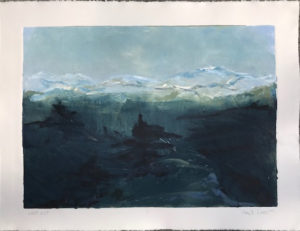 The fields are white, the horizon beckons and we’re keeping our trekking boots on. Some 48 years ago, I heard theologian Dr. Joseph Dillow explain the patterns in the ridges and the valleys of Isaiah’s prophetic masterpiece. It was like being in a biblical glider over peaks and valleys in the histories of nations. The prophet, viewing from hundreds of years before Jesus, saw with distinct clarity what was coming. To a young design student, this uber-view was mind-altering stuff. And we are standing in the midst of what Isaiah further predicted. To quote a secular seer “so let us not speak falsely now, the hour is getting late”*. We know the King is coming — we’ll not lag here in retreat.
The fields are white, the horizon beckons and we’re keeping our trekking boots on. Some 48 years ago, I heard theologian Dr. Joseph Dillow explain the patterns in the ridges and the valleys of Isaiah’s prophetic masterpiece. It was like being in a biblical glider over peaks and valleys in the histories of nations. The prophet, viewing from hundreds of years before Jesus, saw with distinct clarity what was coming. To a young design student, this uber-view was mind-altering stuff. And we are standing in the midst of what Isaiah further predicted. To quote a secular seer “so let us not speak falsely now, the hour is getting late”*. We know the King is coming — we’ll not lag here in retreat.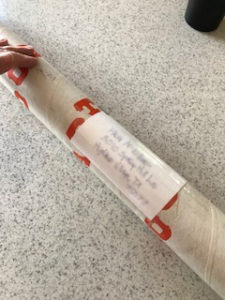 Back to earth, there is something in Job’s proclamation that does ring true for me. I have ideas and ambition, but unless my hands get busy, unless I have the courage to learn from the messes, and unless I manifest it somewhere. I have nothin’. Yesterday I picked up from the post office a piece which has been all over the country in a 3 year traveling show:
Back to earth, there is something in Job’s proclamation that does ring true for me. I have ideas and ambition, but unless my hands get busy, unless I have the courage to learn from the messes, and unless I manifest it somewhere. I have nothin’. Yesterday I picked up from the post office a piece which has been all over the country in a 3 year traveling show: 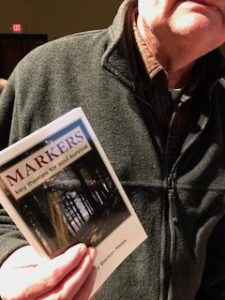
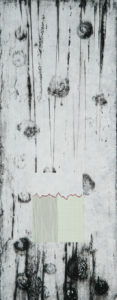 I showed them some pieces like this one, “Time and Mercy” where the chaos is falling down all around the inner life. But there on the inside is the mark of a heartbeat, and the recording of time. There’s a history that is undeniable, part of the fabric that cannot be changed. There’s a span ahead yet unknown. But in this present moment I can breathe and pause. This is the potential moment where beauty is born. For right now I can lift my head because the evidence of love is still shining through for those who are eager for it.
I showed them some pieces like this one, “Time and Mercy” where the chaos is falling down all around the inner life. But there on the inside is the mark of a heartbeat, and the recording of time. There’s a history that is undeniable, part of the fabric that cannot be changed. There’s a span ahead yet unknown. But in this present moment I can breathe and pause. This is the potential moment where beauty is born. For right now I can lift my head because the evidence of love is still shining through for those who are eager for it.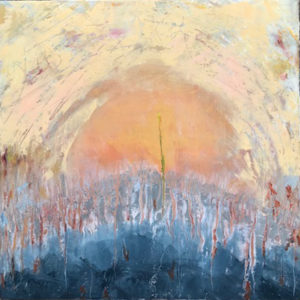 The theme keeps repeating and it’s a universal one. From mythology to classic literature this idea of trekking toward some kind of attainment is in our DNA. Moses, Odysseus, Buddha, Lao Tzu, Dante — the list is long of courageous ones who were answering the ancient quest “where have you come from, and where are you going?”* Something keeps us moving, sometimes for what we’re not even sure; and if our bodies get tired, our spirits keep longing.
The theme keeps repeating and it’s a universal one. From mythology to classic literature this idea of trekking toward some kind of attainment is in our DNA. Moses, Odysseus, Buddha, Lao Tzu, Dante — the list is long of courageous ones who were answering the ancient quest “where have you come from, and where are you going?”* Something keeps us moving, sometimes for what we’re not even sure; and if our bodies get tired, our spirits keep longing. A seasoned pro said this last fall in my hearing and it struck me: SO TRUE: “it’s simple, but it’s not easy”! This could be a mantra for continued practice in any discipline worth pursuing. The key things to know are basic, evident, clear from the ground up. They are simple. Jesus boiled all the law and the prophets down to just two ideas. Nodding our heads, we’re all pleased with ourselves until we actually try to do those two things.
A seasoned pro said this last fall in my hearing and it struck me: SO TRUE: “it’s simple, but it’s not easy”! This could be a mantra for continued practice in any discipline worth pursuing. The key things to know are basic, evident, clear from the ground up. They are simple. Jesus boiled all the law and the prophets down to just two ideas. Nodding our heads, we’re all pleased with ourselves until we actually try to do those two things.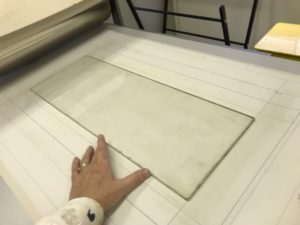 Stick with the simple things and then start moving out creatively! Easy Peasy. It’s getting to the finish that’s the tough part. We know what to do, we imagine so easily! But the sublime result takes a whole lot more effort than we romantics ever imagined!
Stick with the simple things and then start moving out creatively! Easy Peasy. It’s getting to the finish that’s the tough part. We know what to do, we imagine so easily! But the sublime result takes a whole lot more effort than we romantics ever imagined!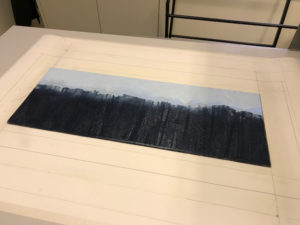 And so, I consider the basics again, chalk it up to “at least I tried” and “I learned something today that will feed the next one”… So, there’s nothing to show here today but some starts, and some working resolve.
And so, I consider the basics again, chalk it up to “at least I tried” and “I learned something today that will feed the next one”… So, there’s nothing to show here today but some starts, and some working resolve.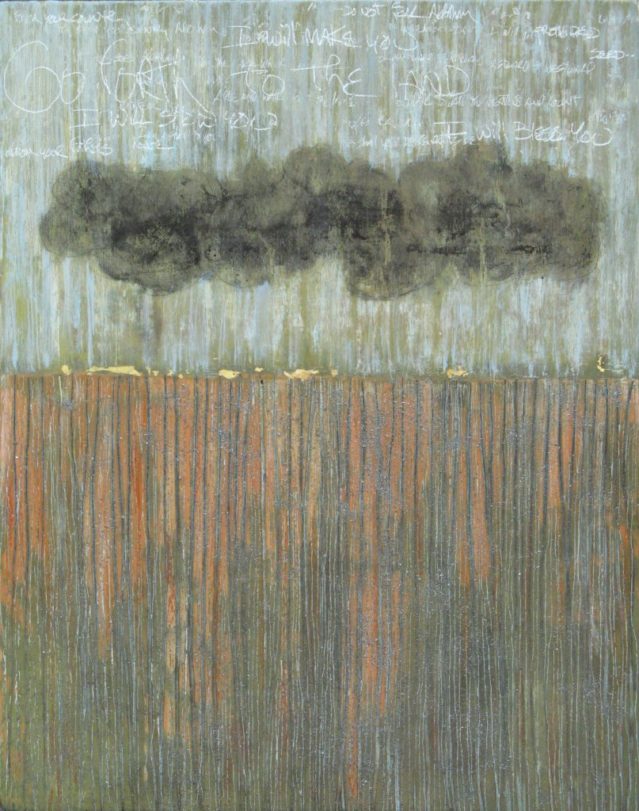
 I don’t think it is a very pretty piece, and therefore, to me, all the more true.
I don’t think it is a very pretty piece, and therefore, to me, all the more true.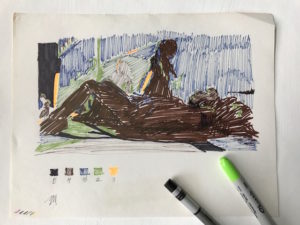 I plotted this sketch onto a full sheet of Arches oil paper, conscious that getting the value structure right was going to be pretty critical before color choices. Also, since my skills are not in the arena of literal portrayals, I needed a visual roadmap of sorts. I usually don’t do figures, but this one was persistent for attention.
I plotted this sketch onto a full sheet of Arches oil paper, conscious that getting the value structure right was going to be pretty critical before color choices. Also, since my skills are not in the arena of literal portrayals, I needed a visual roadmap of sorts. I usually don’t do figures, but this one was persistent for attention.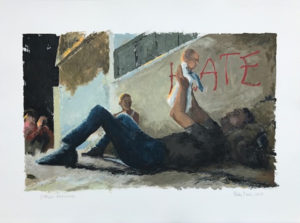 My hope is that in the venues where this might be seen that people may be moved to awaken, to care just a little, to not be able to forget.
My hope is that in the venues where this might be seen that people may be moved to awaken, to care just a little, to not be able to forget.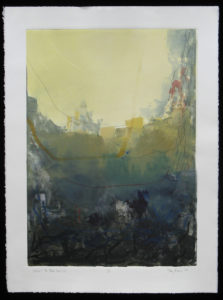 A good portion of my work is an intuitive response, rapidly laid down. This does not mean that the result seen on paper was altogether quick, though if you had watched this piece and others being birthed you might think so. What is visible is an end product of a long term simmering from my mind, spirit and body. The thoughts that collide toward and then into a particular working session, the prayers that have been raised and linger as I craft, and the arms and legs that labor this forward are mine.
A good portion of my work is an intuitive response, rapidly laid down. This does not mean that the result seen on paper was altogether quick, though if you had watched this piece and others being birthed you might think so. What is visible is an end product of a long term simmering from my mind, spirit and body. The thoughts that collide toward and then into a particular working session, the prayers that have been raised and linger as I craft, and the arms and legs that labor this forward are mine. All this and more fascinates me for the Creation account in Genesis 2 has God Himself getting his hands into the dirt, in time, on the ground to make things. Then we are tasked, after His exampling, to make things. It’s in the making that seeing is enhanced. It’s in the time taken and slowed down where relationships are better understood. It’s work, but strangely hope-filled.
All this and more fascinates me for the Creation account in Genesis 2 has God Himself getting his hands into the dirt, in time, on the ground to make things. Then we are tasked, after His exampling, to make things. It’s in the making that seeing is enhanced. It’s in the time taken and slowed down where relationships are better understood. It’s work, but strangely hope-filled.